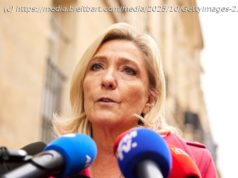J. K. Rowling’s books about a boy wizard transformed publishing, fandom, and the rest of pop culture.
Almost exactly 20 years ago, on September 1,1998, Scholastic published Harry Potter and the Sorcerer’s Stone, the first US edition of the UK’s Harry Potter and the Philosopher’s Stone.
Harry Potter has since became such an all-encompassing phenomenon that from this vantage point, it’s hard to see the full scope what it accomplished: It feels as though publishing and fandom and children’s literature and all of pop culture have always been the way we know them today. But Harry Potter changed the world.
Author J. K. Rowling was an unknown single mom when she first got the idea for her story while stuck on a train; the small UK children’s press that ultimately took a chance on it undoubtedly couldn’t have predicted that it would have a measurable effect on everything it touched. Harry Potter made YA book-to-movie franchises into one of the biggest forces in pop culture. It changed the business model for publishing books for kids. And it introduced an entire generation to the idea that it’s possible to interact with the pop culture you love — to write about it and with it, to make music and art about it, and to build a business around it.
Here’s a look back at the way Harry Potter changed and influenced online fandom, millennial culture, and the publishing industry.
Harry Potter did fine when it first emerged in the UK 20 years ago, winning a Smarties Award and garnering respectable sales for its publisher, Bloomsbury. But it only started to approach phenomenon levels when Scholastic bought the US publication rights for an astonishing $105,000, about 10 times more than the average foreign rights sale at the time.
Arthur Levine, the Scholastic editor who acquired the books, had an excellent eye for British books that would work in the US, having already acquired the US rights to Redwall and His Dark Materials. But even he didn’t know that Harry Potter would grow as big as it did. He just knew that he loved it and wanted to publish it. Scholastic President Barbara Marcus Barbara Marcus “kept saying ‘do you love it?’ and Arthur said yes, so we went for it,” a Scholastic spokesperson recalled in 2002. “I would have been willing to go further than that if I had to,“ Levine said in 2007 .
The $105,000 sale granted Harry Potter two things: a built-in publicity hook, and a big budget.
The hook came from the press: Newspapers featured articles about the little English book that had garnered such a huge sale. Reviewers wanted to know what kind of book would justify that kind of money. It was a curiosity, and as such, it was a story.
The budget came from Scholastic itself. Whenever a publisher acquires a book, it creates a budget for that book. That budget is structured so that elevating the numbers in one category means elevating the numbers in the next category: If you’re going to invest $105,000 just in acquiring a book, you’re also going to pour extra money into marketing, publicity, and production, so that you have a reasonable chance of making that money back.
So Scholastic invested in a lovely hardcover design for Harry Potter and the Sorcerer’s Stone, with a soon-to-be iconic cover, even though conventional wisdom of the time held that children’s books only made money in paperback. It arranged for Harry Potter to be displayed on the front tables at bookstores, and for ads to appear in the right newspapers and magazines. In short, it gave the book many more resources than are typically afforded to the average debut novel from an unknown author, and that decision paid off.
But none of Scholastic’s efforts would have mattered in the end if the people who picked up the book hadn’t loved it. That’s what pulled Harry Potter out of flash-in-the-pan territory and elevated it into a phenomenon that defined childhood for an entire generation.
A 2012 study found that 55 percent of YA novels are bought by adults. In large part, that boom is courtesy of Harry Potter, which became a surprise crossover hit adored by both children and adults, and which made it acceptable for adults to read books that are ostensibly for children.
For some critics, that’s a worrisome development, suggesting that adults are too dull and stupid to appreciate books actually written for adults. But there are plenty of reasons for a grown person to enjoy Harry Potter.
The Harry Potter books combine the intricate plotting of a mystery with the sweep and scope of epic fantasy and the intimacy and character development of a classic boarding school narrative. The result is purely pleasurable to read at any age: The puzzlebox mystery plotting keeps the pages turning propulsively forward, the fantastic mythology gives the world scope and magic and joy, and the boarding school structure makes the characters warm and familiar and charming. It also makes their eventual death (for some) and trauma (for all) deeply affecting.
It’s true that Rowling’s prose is best described as workmanlike and competent; if the reason you read is solely to enjoy perfectly balanced and polished sentences, you may be best served elsewhere. But if you are an adult who can imagine reading for more than one reason (the pleasures of story, the joy of immersing yourself in another world), the Harry Potter books become enormously appealing.
Part of what made Harry Potter such a literary phenomenon is that so many kids were reading the books despite an unprecedented number of attempts to get them to stop reading the books.
The Harry Potter series, like many works of fantasy, involves wizardry and witchcraft. The feeling that the books thus promoted the occult proved to be the basis for constant challenges to the series’ presence in school libraries and bookstores by concerned conservative parents. The books first topped the American Library Association’s list of the most banned books of the year in 1999, and remained in the top spot for most of the next decade.
In some regions, pressure to censor the series was so high it led to lawsuits: In 2003, a judge ordered an Arkansas school district that had removed the books from schools due to promotion of “the religion of witchcraft” to return them. Similar formal attempts at removal persisted into the latter half of the decade, and the books continue to rile up conservative religious leaders who warn of its “demonic” influence.
But witchcraft wasn’t the only evil the books were accused of peddling. In 2007, after the series’ end, J. K. Rowling retroactively outed the powerful wizard Dumbledore as gay. The news prompted Christian scholars to declare the move “ nonsense,” while queer fans were in turn angry that Rowling had done so little to make the queer subtext of Dumbledore’s character overt during the time he was actually being written (and alive). In recent years, Rowling has provoked controversy for her series’ lack of diversity, for denying queer sexuality of characters, and many, many more kerfuffles.
All of this controversy speaks not only to concerns that Rowling’s work would negatively influence children, but to the reality that many of those children grew up to be arguably even more progressive than the books they grew up reading — which is, in a way, a confirmation of conservatives’ worst fears about the series.
Here are just two of the ways Harr y Potter changed publishing, and how those changes affected the rest of pop culture:
1) The books made it possible to publish long works aimed at children. Prior to Harry Potter, the accepted wisdom was that kids didn’t have the attention span to read long books. And anyway, the thinking went, kids weren’t buying their own books. Their parents were paying for everything, and they would never be willing to pay an extra dollar or two for a longer book, with its extra printing and binding.
But after Harry Potter became an unstoppable cultural force, and it was clear that fans would keep buying the books no matter what, it started to expand. The last four volumes of the series are all doorstoppers that clock in at well over 700 pages each.
Publishers and children’s writers took notice. Booklist found that middle-grade novels expanded 115.5 percent between 2006 and 2016, the decade in which the Potter novels were at their longest. (They rose only 37.37 percent between 1996 and 2006.)
2) Harry Potter made children’s literature an unstoppable force. Before Harry Potter, children’s literature was often considered an afterthought. Sales were falling. Children, analysts would say wistfully, just weren’t reading anymore.
After Harry Potter, children’s literature became a category full of mega-sellers. In 2004, in the midst of the Harry Potter phenomenon, sales of non-Potter kid lit were increasing by 2 percent a year.






